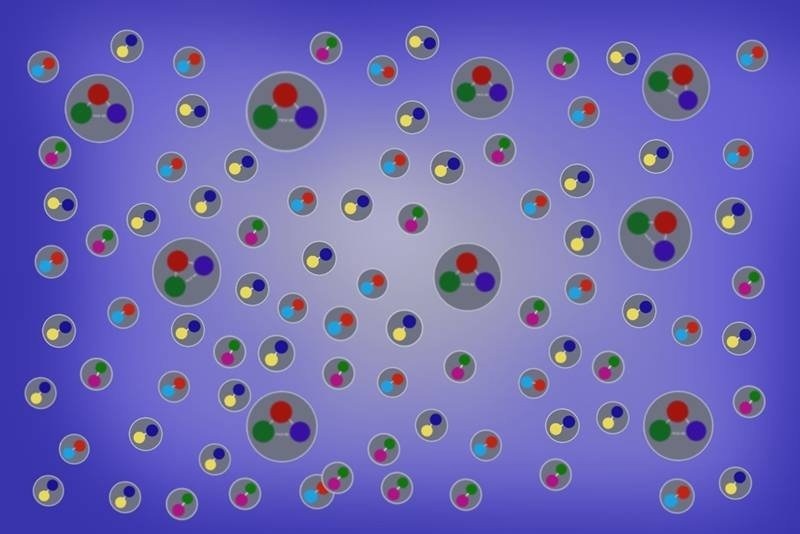Quark-gluon plasma (QGP) represents a fascinating phase of matter that scientists generate within a laboratory setting by colliding two heavy nuclei.

A cartoon of free-streaming hadrons emerging from quark-gluon plasma. Image Credit: Maneesha Sushama Pradeep
These collisions result in the formation of a QGP fireball, which subsequently undergoes expansion and cooling following the principles of hydrodynamics governing fluid behavior under diverse conditions.
As the QGP fireball expands and cools, subatomic particles such as protons, pions, and other hadrons (particles composed of two or more quarks) emerge. These particles are detected and quantified by instruments positioned around the collision. Fluctuations in the particle count across different collisions convey crucial information about the QGP.
However, extracting this information from observable data poses a considerable challenge. The maximum entropy principle offers a vital bridge between experimental observations and the hydrodynamics governing the QGP fireball.
The Impact
Significance arises when the QGP fireball, in its process of expansion and cooling, reaches a point where it becomes too diluted to be accurately described by hydrodynamics. This signifies the "hadronization" of the QGP, wherein its energy and quantum properties are now carried by hadrons—subatomic particles like protons, neutrons, and pions composed of quarks.
During the “freeze-out” stage, these hadrons encapsulate information about the final hydrodynamic state of the QGP fireball. Consequently, the particles emitted from the collision convey this information to the detectors in experimental setups.
Recent research has introduced a computational tool for simulating observable fluctuations in the QGP, allowing scientists to leverage freeze-out to discern indications of a critical point between a QGP fireball and a gaseous hadronized state.
This critical point remains an unresolved question in quantum chromodynamics, the theory explaining the robust gluon-driven interactions among quarks.
Summary
Variations within the Quark-Gluon Plasma (QGP) contain valuable information about the specific region on the Quantum Chromodynamics (QCD) phase diagram where the collisions undergo “freeze-out.”
Establishing a link between fluctuations in hydrodynamics and the observed variations in hadrons is a pivotal step in translating experimental measurements into a comprehensive map of the QCD phase diagram. The distinctive signatures of a critical point manifest in significant event-to-event fluctuations.
Data obtained from the Run-I Beam Energy Scan (BES) initiative at the Relativistic Heavy-Ion Collider (RHIC) strongly suggest the potential existence of the critical point. In response to this indication, researchers at the University of Illinois, Chicago have proposed an innovative and universally applicable approach.
This approach aims to convert hydrodynamic fluctuations into corresponding variations in the multiplicities of observed hadrons.
This new approach adeptly surmounts challenges that hindered previous endeavors to address this issue. Importantly, the method, grounded in the maximum-entropy principle, successfully retains all information pertaining to the fluctuations of conserved quantities as outlined by hydrodynamics.
The innovative freeze-out procedure is poised to be employed in theoretical calculations of event-by-event fluctuations and correlations. Its applicability extends to experiments like the Beam Energy Scan program at RHIC, which was designed to map the Quantum Chromodynamics (QCD) phase diagram.
This study was financially supported by the Department of Energy Office of Science and the Office of Nuclear Physics within the framework of the BEST Topical Collaboration.
Journal Reference
Sushama, M., et al. (2023) Maximum Entropy Freeze-Out of Hydrodynamic Fluctuations. Physical Review Letters. doi.org/10.1103/PhysRevLett.130.162301.